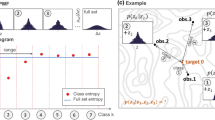Abstract
Background, Aims and Scope
The management and decisions concerning restoration of contaminated land often require in-depth risk analyses. An environmental risk assessment is generally described as proceeding in four separate steps: hazard identification, dose-response assessment, exposure assessment, and risk characterization. The risk assessment should acknowledge and quantify the uncertainty in risk predictions. This can be achieved by applying probabilistic methods which, although they have been available for many years, are still not generally used. Risk assessment of contaminated land is an area where probabilistic methods have proved particularly useful. Many reports have appeared in the literature, mostly by North American researchers. The aim of this review is to summarize the experience gained so far, provide a number of useful examples, and suggest what may be done to promote probabilistic methods in Europe and the rest of the world.
Methods
The available literature has been explored through searches in the major scientific and technical databases, WWW resources, textbooks and direct contacts with active researchers. A calculation example was created using standard simulation software.
Results and Discussion
Uncertainty and variability are part of every risk assessment. Much work on risks from contaminated soil has focussed on exposure, and choice and structure of the exposure model is then a basic uncertainty factor. Other factors, e.g. parameter uncertainty, are easier to characterize. Variability can be separated into inter-individual, spatial and temporal components. Both uncertainty and variability in the exposure variables can be investigated using Monte Carlo simulation methods. These simulations enable not only the estimation of the probability for a given risk or exposure, but also add information on the sensitivity of the various input variables. This will assist the assessor in further refining the risk analysis. The large number of applications published encompasses soil contamination by lead, arsenic, chromium, uranium, polychlorinated biphenyls (PCB), polycyclic aromatic hydrocarbons (PAH), hexachlorobenzene, pentachlorophenol and chlorinated solvents. Probabilistic risk assessments have been used in widely different settings, such as the metallurgical industry (mining and smelting operations), manufacturing, gas plants, wood impregnation, infrastructure, and waste landfills. Site-specific remediation goals can be specified using probabilistic methods, and a guideline document has been issued within the US Superfund programme. The usability of probabilistic risk assessment is illustrated by a calculation example. The current Swedish generic guideline value for benzo[a]pyrene in contaminated soil, with ingestion of vegetables as the major route of exposure, is compared with a probabilistic estimate. The toxicological reference value corresponds well with the upper 95th percentile of the estimated variability in intake, but does not account for uncertainty in the partition coefficients.
Conclusions and Outlook
The probabilistic approach to risk assessment has proved its value in characterizing variability and uncertainty, and thereby contributing to a more informed and transparent decision-making process. The management of contaminated land is a major environmental application for probabilistic risk assessments. A substantial number of studies have been published and the method is now well established in the scientific community. This development has progressed further in the United States than elsewhere, but similar applications are now being reported from Europe and Asia. Probabilistic risk assessment is used to derive soil guideline values in the United Kingdom, and other countries may be anticipated to follow. However, efficient use of probabilistic methods for risk assessment of contaminated land requires certain components. There is a requirement for quality assurance and transparency that can be met by guidelines specifying data requirements and which items to report on. Both federal and state governments in the United States have issued such guidelines, and we see a similar need from a European perspective. A second component, necessary for a successful implementation of probabilistic methods, is education. We have ourselves developed undergraduate curricula, but we also see a need for continuous education of risk assessors and decision makers. The third component required is case studies, showing how probabilistic risk assessment can be implemented successfully in the cleanup of contaminated land. Most published studies originate from the United States, so here too there is a need for the rest of the world to catch up. In addition to the three components mentioned, there is an obvious need to develop and improve methods and practice of risk communication.
Similar content being viewed by others
Author information
Authors and Affiliations
Corresponding authors
Rights and permissions
About this article
Cite this article
Öberg, T., Bergbäck, B. A Review of Probabilistic Risk Assessment of Contaminated Land (12 pp). J Soils Sediments 5, 213–224 (2005). https://doi.org/10.1065/jss2005.08.143
Received:
Accepted:
Published:
Issue Date:
DOI: https://doi.org/10.1065/jss2005.08.143




